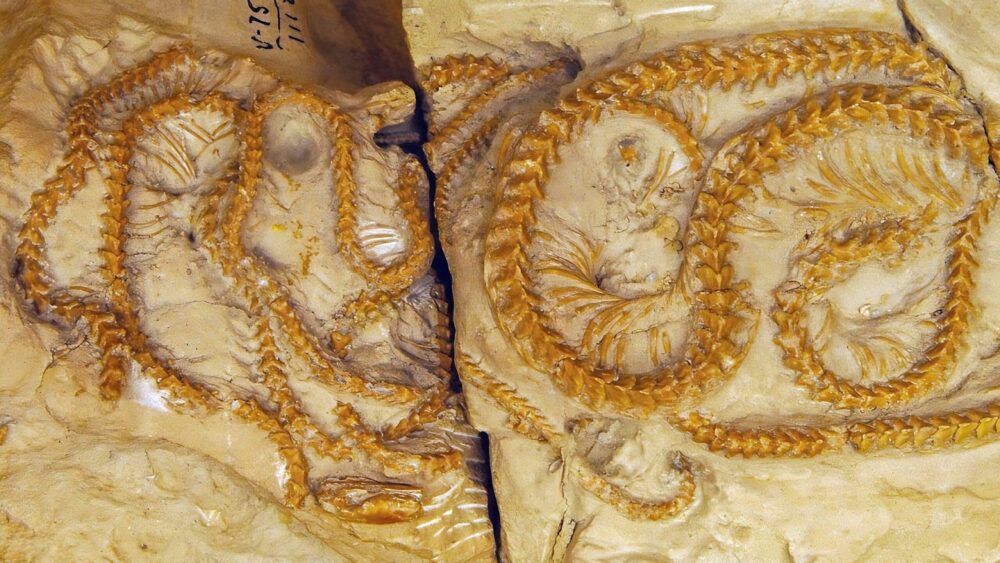The fossil snake species, Hibernophis breithaupti, were in a hibernaculum that had just four specimens, but they were articulated, or fully intact.
While many snakes begin their lives as solitary beings, only interacting with species of its own kind for mating, or even predating their own species, only one species, the garter snake is currently known to congregate in hibernaculums, or dens or spaces during cold winter months.
Researchers have discovered an ancient species of Boidae snake that also occupied dens together in cold weather. The snake, of the Boidae family were found preserved in a cluster in a position that the researchers say is the first evidence of social behaviors in reptiles in the fossil record. The fossil snake species, Hibernophis breithaupti, were in a hibernaculum that had just four specimens, but they were articulated, or fully intact and in a position that the researchers say represents a social behavior that is not often observed. One of the four snakes was twice the size of the other three, which enabled the researchers to see the same species at different stages of its life cycle.
“This is really unusual for reptiles. Of the almost 15,000 different kinds of reptile species alive today, none of them hibernate in the way that garter snakes do,” co author of a paper describing the findings, Michael W Caldwell of the Department of Biological Sciences, University of Alberta, Edmonton said in a University of Alberta news story. “They can’t regulate their body temperature so they need to find a way to conserve as much heat as they can through the winter and they do this by forming these big masses,” Caldwell said.
“We learn quite a bit more about Boidae evolution in the broad sense. It seems that they probably started out as relatively small-bodied snakes, which is interesting.”
The researchers noted that the quartet of snakes were well preserved and were found in the White River Formation in Wyoming. These snakes lived 38 million years ago during a time when volcanoes of the Southern Basin and Range Volcanic System were active. There was considerable volcanic ash floating about and the ash settled and helped to preserve the snake specimens in fine, sandy mudstone. It is speculated that a flooding episode led to the demise of these snakes.
An abstract of the paper, “Morphology and systematics of a new fossil snake from the early Rupelian (Oligocene) White River Formation, Wyoming” can be read on the Zoological Journal of the Linnean Society website.



